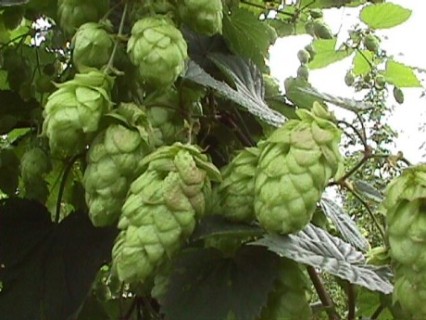Check out our hops here: https://www.home-brew-online.com/ingredients-c45/hops-c226#sort7
Dry hopping is a technique used to develop more aroma and flavour in a beer, especially those with a good hoppy bite such as an IPA and some pale ales. When hops are added as a ‘dry’ addition you won’t get any bitterness but you will get increased aroma and some flavour.
When do I add the hops
Dry hop additions can be added at various stages which achieve a varied level of aroma and flavour, however dry hop additions will never add bitterness, the hops need to be boiled in order for the bitterness to be extracted through the process of isomerisation.
If brewing from grain you can add your dry hops during the last 5 to 10 minutes of the boil, this does mean that some of the delicate aroma oils are lost in the boil, so for an intense hoppy aroma you would still need to add a dry hop addition either in the primary or secondary fermenter.
Some brewers add the hops in the primary fermenter about 3 days before bottling/kegging. This is a method that you’ll find with most kit beers that contain a separate hop addition. This will impart aroma, however due to the fermentation process some of this is lost through the production of Co2 which carries the flavour and aroma away with it.
The secondary fermenter is the most popular option for dry hopping among many brewers. Through this method you can extract the optimum amount of flavour and aroma from the hops. Add the hops and leave for 3 to 5 days, try not to leave them for too long otherwise you could get an unpleasant grassy aroma/flavour from them.
The hop residue generally sinks to the bottom of the fermenter and is left behind when bottled/kegged. Some particles may be transferred over but not in large enough quantities to effect the flavour negatively. You can reduce the hop residue transferred by using a muslin bag or hop straining bag to catch any hop detritus.
Biotransformation
There is another theory amongst some brewers that adding the hops at the start of the ferment creates an interaction between the yeast and the hops which creates flavours that could not be achieved in the boil or through dry hopping. It is a popular technique with some American breweries when making New England IPA. One to consider.
How do I add the hops
Hops can be added loose to the fermenter or in a muslin bag, some say that more flavour and aroma is extracted if added loose however I haven’t seen a noticeable difference between the two methods. I prefer to add the hops in a muslin bag and then add it to the wort as I find this more convenient than using a muslin bag to catch any hop material at the endwhen bottling. However it is personal preference.
Which Hops Do I Use?
You would usually use hops with a low alpha acid content for dry hopping these include: East Kent Golding, Fuggle, Saaz, Cascade, Williamette and Tettnanger. Another good British hop to use is Jester which is a dual purpose hop or Mystic which is a brand new hop when writing (2019).
Pellets or leaf
You can use both but pellets work quite well when dry hopping. Pellets are often used in commercial brewing and are generally far more convenient to use than leaf hops. If you are using leaf hops don’t worry about sanitising them as the alcohol in the beer will kill any bacteria that may be on them. Generally with leaf hops you’ll find that you need to use far more to achieve the same results produced by pellet hops. However as with all things brewing it comes down to personal preference.
How much hops do I add?
This really comes down to taste. Usually you would add about 20 to 60 grams to a 23 litre batch. However you can experiment with higher and lower quantities.
I hope this info helps!
Happy Brewing!



One Comment Add yours